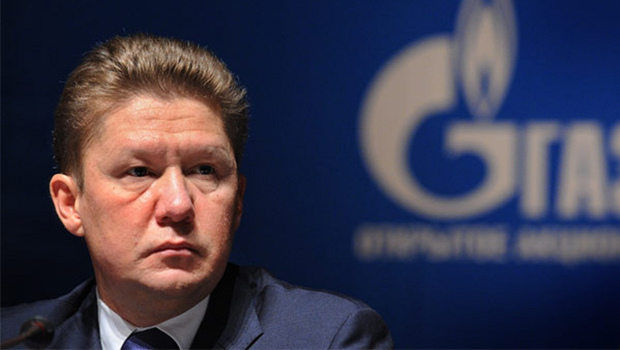
After Three-Year Hiatus, Gazprom to Renew Purchases of Turkmen Gas
Publication: Eurasia Daily Monitor Volume: 15 Issue: 149
By:

Under Communism, Turkmenistan’s greatest contribution to the economy of the Union of Soviet Socialist Republics (USSR) was its natural gas. And following the 1991 collapse of the Soviet Union, gas exports swiftly became Turkmenistan’s biggest source of revenue. Yet, its relationship with Russia’s Gazprom was often fraught over pricing issues; and in January 2016, Gazprom suspended its purchases of Turkmenistani gas completely. However, following an October 9, 2018, visit to Ashgabat by Gazprom CEO Aleksei Miller, the Russian state-owned energy giant will once again begin purchasing Turkmenistan’s gas, beginning on January 1, 2019 (Gazprom.ru, October 9). The joint decision also represents a dramatic reversal for government policy in Turkmenistan, which, over the past several years, lost not only Russian but also Iranian gas export markets. This had, until now, left the Central Asian republic solely dependent upon China, notable for driving hard bargains on energy prices.
In the aftermath of the breakup of the USSR, Turkmenistan’s biggest problem was that natural gas pipelines built across Soviet Central Asia (the so-called Central Asia–Center, or SATS, pipeline system, built between 1960 and 1988) were all oriented toward what was now the Russian Federation. Following 1991, Russia’s natural gas monopoly Gazprom retained control over SATS and it offered post-Soviet Central Asian states rock-bottom prices for its gas, which was then exported to Europe for prices multiple times what Central Asian producers received.
Independent Turkmenistan’s first leader, president for life Saparmurat “Turkmenbashi” (“father of the Turkmen”) Niyazov, found himself increasingly irritated by Gazprom’s tight-fisted policies as well as the Kremlin’s hostility toward Western energy companies infiltrating former Russian colonial holdings in the Caucasus and Central Asia (territories Moscow has called its “near abroad”). As a result, in March 1997, Niyazov temporarily halted exports to Russia and opened the $195 million, 124-mile Korpezhe–Kurt Kui pipeline to Iran—Central Asia’s first gas export pipeline that bypassed Russia (Lenta.ru, April 7, 2005; Turkmenistan.ru, January 29, 2003).
In the ensuing decades, Turkmenistan continued to seek alternatives to overreliance on Gazprom. Perhaps most notably, on December 14, 2009, China and Turkmenistan formally opened the first section of a 1,139-mile-long, 40-billion-cubic-meter-per-year (bcm/y) natural gas pipeline (Izvestia, December 14, 2009). Chinese sales became critical for Turkmenistan, particularly since, on April 9, 2009, a mysterious explosion occurred on the SATS-4 Davletbat–Daryalik pipeline, near the border between Turkmenistan and Uzbekistan, which halted all of Turkmenistan’s gas exports to Russia. In an extraordinary move the following day, the Turkmenistani foreign ministry blamed Russia for the pipeline explosion (Newsru.com, April 9, 2009). Gazprom subsequently dramatically reduced its purchases of Turkmenistani gas before stopping them completely in January 2016.
Since then, Turkmenistan has optimistically pursued two additional east-west alternatives. The first, the Turkmenistan–Afghanistan–Pakistan–India (TAPI) pipeline, has been under discussion for the past 20 years. Estimated to cost $10 billion, the 33 bcm TAPI faces major financing problems and significant security challenges, notably in Afghanistan, which stymie the project to bring Turkmenistani gas to energy-starved Pakistan and India. In addition to TAPI, Ashgabat expressed interest in supplying the Southern Gas Corridor, which will deliver Caspian-basin gas volumes (initially from Azerbaijan) to Southeastern Europe. However, Turkmenistan’s participation would require the construction of a subsea Trans-Caspian Pipeline (TCP), from the port of Türkmenbaşy to Baku, which, under the terms of the newly agreed August 12 Caspian Sea Convention (see below), will essentially require that all five littoral states give their consent—something Russia and Iran are unlikely to give (see EDM, September 12). At the same time, the TCP is dogged by questions of financing, as Azerbaijan and Turkmenistan are unlikely by themselves to provide the required capital.
During his October 9 visit to Ashgabat, Miller gave an interview to Turkmenistan’s state news agency TDH, detailing Gazprom’s renewed interest in Turkmenistani gas even while glossing over the two countries’ stressful history. He remarked that Turkmenistan “is a traditional partner of Gazprom in the energy sector, and an intergovernmental agreement between the Russian Federation and Turkmenistan on cooperation in the gas sector until 2028 is currently in force” (TDH, October 9).
While the ulterior motives for Gazprom’s rapprochement with Turkmenistan remain opaque, it is notably occurring in the context of warming relations between the five Caspian littoral states. As noted above, following their fifth summit, on August 12, Azerbaijan, Iran, Kazakhstan, Russia and Turkmenistan signed a historic convention delineating various offshore water border and seabed questions. Additionally, the “Caspian Five” recommitted to agreeing to close the entire sea to outside military forces. It seems likely then that Gazprom’s revival of gas purchases from Turkmenistan may well be a token of Putin’s gratitude for Ashgabat helping to keep the United States’ military forces at bay. A further possibility underlying their closer cooperation could be increased global competition with other producers, ranging from US liquefied natural gas (LNG) exports to an expansion of output from the joint Qatari-Iranian South Pars venture. Whatever the case may be, given the serious challenges faced by Turkmenistan’s economy (see EDM, July 9), any and all options to diminish relying on Iranian and Chinese exports is a welcome development.



